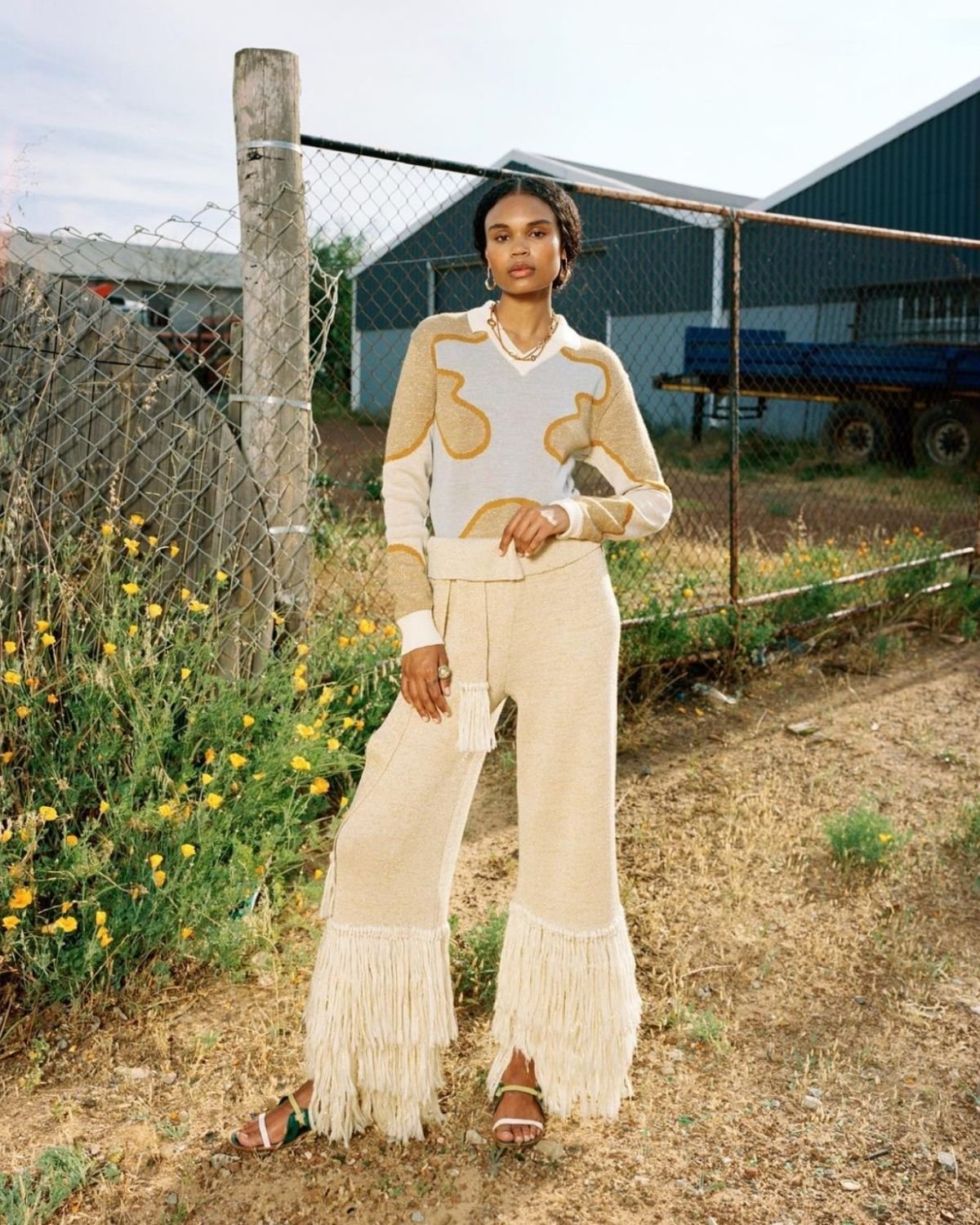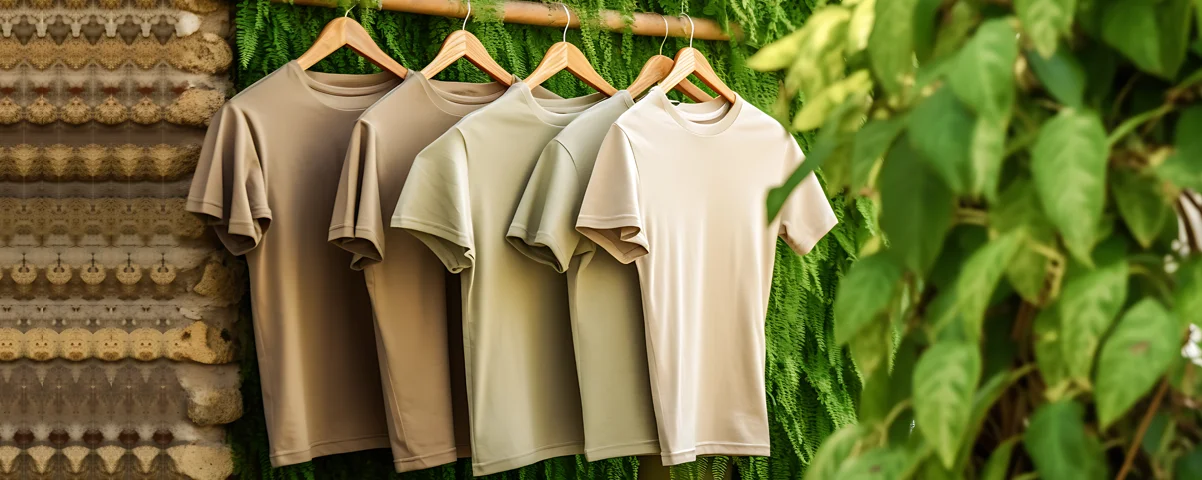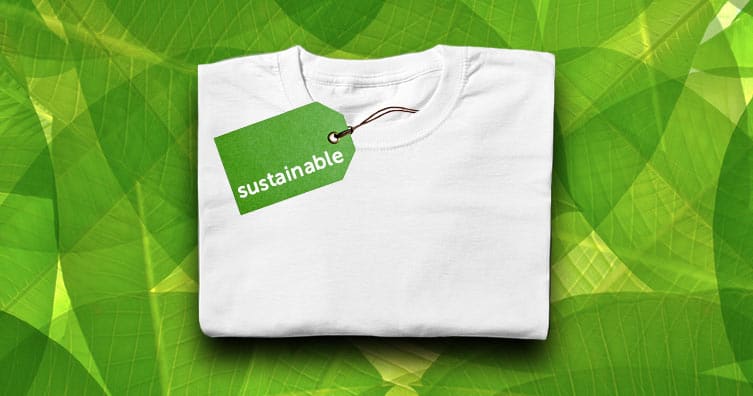Stay Ahead of the Contour by Checking Out Ingenious Style Trends
In a market as dynamic as style, remaining ahead entails greater than just adhering to current trends-- it requires an expedition of development. Smart textiles, for example, are changing garments right into functional work of arts, while 3D printing is reinventing design procedures with its adjustable, waste-reducing capabilities. As sustainability becomes a cornerstone, technologies like eco-friendly products and circular style techniques are reshaping ecological duty - Cape Town Sustainable Fashion. Moreover, the convergence of modern technology and fashion heralds a new era of customer engagement. Exactly how, after that, can these emerging fads redefine the future of style, and what effects do they hold for brands seeking to flourish in this progressing landscape?

Welcoming Smart Textiles
In recent times, the apparel industry has actually experienced a transformative shift with the combination of clever fabrics, a cutting-edge innovation that blends modern technology with textile. This advancement stands for not only a blend of visual appeals and capability but additionally a considerable leap towards sustainability and personalization in fashion. Smart textiles, also called e-textiles, embed sophisticated electronics such as sensors and conductive strings within the textile, enabling garments to communicate with the user or the setting.
These fabrics are developed to check physical criteria, such as heart price or body temperature, providing real-time health analytics. Past wellness applications, smart fabrics are additionally being utilized for flexible garments, which can alter color or pattern in feedback to environmental stimulations, thus using a vibrant style experience.
Additionally, the advancement of energy-harvesting textiles that produce power from activity or sunlight is leading the way for self-dependent wearable modern technology. This technology is appealing to eco mindful consumers and designers aiming to minimize the environmental impact of fashion. As research and advancement in this field advance, clever textiles are expected to come to be progressively prevalent, reshaping the landscape of modern-day fashion with their multifunctional capabilities.
The Surge of 3D Printing
Transforming the manufacturing landscape, 3D printing has actually become a game-changer in the fashion business. This cutting-edge innovation has actually enabled developers to push the limits of imagination, producing intricate and customized garments that were formerly unbelievable. By leveraging electronic layout and additive production, 3D printing helps with the production of complicated geometries and patterns, enabling developers to try out new appearances and frameworks.
A significant benefit of 3D printing in fashion is its ability to generate on-demand, lessening waste and lowering inventory needs. This efficiency not only enhances manufacturing processes however additionally enables for quick prototyping, allowing designers to bring their visions to life in a much shorter timeframe. Moreover, 3D printing sustains personalization to a degree unequaled by typical approaches, using special layouts and customized fits tailored to private customer preferences.
The rise of 3D printing has likewise equalized style, making it available to emerging developers who can currently produce top quality pieces without significant economic investment in traditional manufacturing infrastructure. As innovation continues to development, the apparel industry is positioned to harness the full potential of 3D printing, checking out brand-new products and methods that will certainly redefine how style is conceived and created.
Sustainable Fashion Innovations
As the fashion industry faces the pushing demand for environmental responsibility, lasting style advancements have arised at the leading edge of transformative adjustment. The expanding awareness of environmental influence has fueled a shift in the direction of more eco-conscious techniques and materials. Designers and brand names are currently prioritizing sustainability, incorporating techniques that lessen waste and decrease carbon impacts.
One considerable development is the rise of circular style, which stresses recycling and upcycling to expand the lifecycle of garments. This method not just decreases waste but also urges consumers to take on a more mindful method to apparel usage.
An additional breakthrough depends on the adoption of innovative dyeing techniques that make use of waterless processes or all-natural dyes, consequently minimizing the vast quantities of water and chemicals typically utilized in fabric dyeing. you can look here Additionally, developments in biotechnology have resulted in the development of lab-grown leather and textiles, using eco pleasant and cruelty-free options to traditional materials. With these introducing initiatives, the fashion business is making purposeful strides towards a much more lasting future.

Tech-Integrated Apparel
Tech-integrated clothing stands for an innovative combination of fashion and innovation, reshaping how individuals communicate with their apparel. This ingenious domain is marked by the inclusion of clever textiles and ingrained electronic components, improving both functionality and aesthetic allure. From fitness trackers installed in sportswear to warmed jackets controlled using mobile phone applications, tech-integrated clothing offers consumers extraordinary benefit and flexibility.
Pioneering brand names are driving this pattern, concentrating on developing garments that react to environmental stimuli or individual commands. For example, some garments can alter shade or pattern in reaction to temperature shifts, while others integrate biometric sensing units to check health metrics like heart price or tension levels. The seamless combination of innovation right into fabrics likewise reaches ecological sustainability, with initiatives to create self-cleaning fabrics or garments that adapt to weather, hence lessening the need for numerous layers.
In addition, the arrival of wearable modern technology is not simply limited to clothes however includes accessories like watches and eyeglasses, additional broadening the scope of tech-integrated fashion. As the market continues to introduce, the possibility for personalization and customization in clothing expands, supplying consumers one-of-a-kind, tech-enhanced fashion experiences that deal with their private requirements and preferences.
Future of Virtual Style
Recently, the future of digital style has emerged as a transformative pressure within the market, leveraging advancements in electronic innovation to redefine how fashion is developed, experienced, and eaten. By integrating increased reality (AR), virtual fact (VIRTUAL REALITY), and 3D style tools, designers can currently craft immersive and interactive experiences that transcend standard fashion limits. Virtual fashion permits the creation of garments that exist entirely in electronic atmospheres, supplying unlimited possibilities for development without the website link restrictions of physical manufacturing.
This electronic shift not just provides opportunities for imaginative expression but also addresses sustainability issues integral in conventional fashion practices. Cape Town Sustainable Fashion. By removing the requirement for physical resources, online style decreases waste and decreases carbon footprints. In addition, the increase of digital style lines up with the enhancing consumer need for individualized and distinct experiences, as virtual garments can be customized and customized to private preferences effortlessly

Final Thought
The fashion business's future hinge on the assimilation of innovative modern technologies and lasting techniques - Cape Town Sustainable Fashion. Smart textiles and tech-integrated garments are enhancing capability, while 3D printing uses possibilities for personalization and waste decrease. Lasting fashion, through green products and circular methods, demonstrates a dedication to ecological stewardship. Additionally, digital style is poised to redefine consumer interactions. Adjusting to these patterns is important for brand names seeking to stay relevant and competitive in this rapidly progressing landscape.
In recent years, the fashion market has observed a transformative change with the integration of smart textiles, a sophisticated technology that mixes modern technology with textile.As the style sector grapples with the pushing demand for ecological obligation, lasting style innovations have actually arised at the forefront of transformative adjustment.In current years, the future of digital style has actually emerged as a transformative pressure within the market, leveraging improvements in electronic technology to redefine just how style is visit the website developed, experienced, and consumed. The increase of digital style straightens with the increasing customer demand for individualized and special experiences, as digital garments can be customized and tailored to specific preferences with ease.
The style sector's future lies in the assimilation of sustainable practices and innovative technologies.